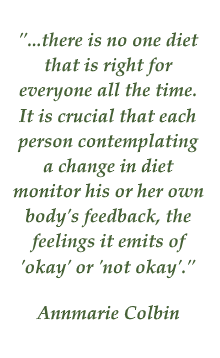When Buying Organic Produce
is Most Important
We know organic produce is better for us and better for the environment, but there are times that buying non-organic can suffice.
Sometimes the selection of organic fruits and vegetables available to us locally is slim. Perhaps you even live where there is no farmer's market, or like mine, your market closes for almost 6 months during the winter months. That leaves us buying produce wherever we can, organic or not.
But we can still be working to lessen the number of toxins we ingest by choosing non-organic produce selectively. Not all produce carries the same accumulation of pesticides, and knowing the difference is critical.
In comes the Environmental Working Group.
Perhaps you've heard of them or the "dirty dozen" they're making famous. They are a non-profit organization devoted to protecting public health through both research and better legislation.
Through their extensive research and compilation of the Department of Agriculture's and the Food and Drug Administration's test results, they've uncovered both the produce with the highest levels of pesticide contamination and the lowest. It's a list worth memorizing or carrying with you.
To quote from the EWG website: "EWG's computer analysis found that consumers could cut their pesticide exposure by almost 90 percent by avoiding the most contaminated fruits and vegetables and eating the least contaminated instead."
90% reduction - that's pretty impressive! So even if organic produce isn't available to you or is outside your budget, you can reduce your exposure to pesticide residues just by knowing which fruits and vegetables are "consistently clean" even when grown non-organically.
The following information is from the EWG's list for 2018, the most current available as of this writing. But check out their new, more user-friendly site at ewg.org for more information on the quality of our consumer products.
Dirty Dozen
|
Clean Fifteen
|
from ewg.org/foodnews/summary/
*A small amount of sweet corn and papaya sold in the U.S. is produced from genetically modified seeds. Buy organic varieties of these crops if you want to avoid genetically modified produce.
You can print this page and cut out the above box. It will easily fit in a wallet or pocket for easy reference.
Related Pages
Healthy Salad Dressing Recipes Throw out
your bottled dressings and learn to make healthy salad dressings from fresh ingredients.Quinoa Recipes Great recipes for this extremely healthy, versatile, and tasty "new" grain.
Cooking with Yogurt Learn about the many uses for yogurt in your meal planning and how to get the most out of one container.
Healthy Cooking Oils The healthiest cooking oils may not be what you expect. Learn which fats contribute to a healthy body.
Brown Rice Recipes Offering quick and easy ways to serve classic whole grain brown rice.
Recent Posts
-
Valter Longo and the Longevity Diet
Valter Longo's Longevity Diet, which is a fasting mimicking diet, is showing great promise as a prescribed therapy. If you haven't heard of Valter Longo, check out his newly launched website to follow… -
Fasting Overview for Beginners
Information on fasting especially geared toward the beginner. Important guidelines on fasting including the contraindications and how to do a simple one-day fast. -
Meat vs. Vegan | AllAboutFasting
Confusion seems to arise as to whether this site promotes meat-eating or veganism. Let's set the record straight and talk about ideal diets. Ideal for whom? Each of us individually.
